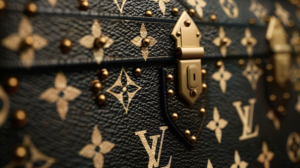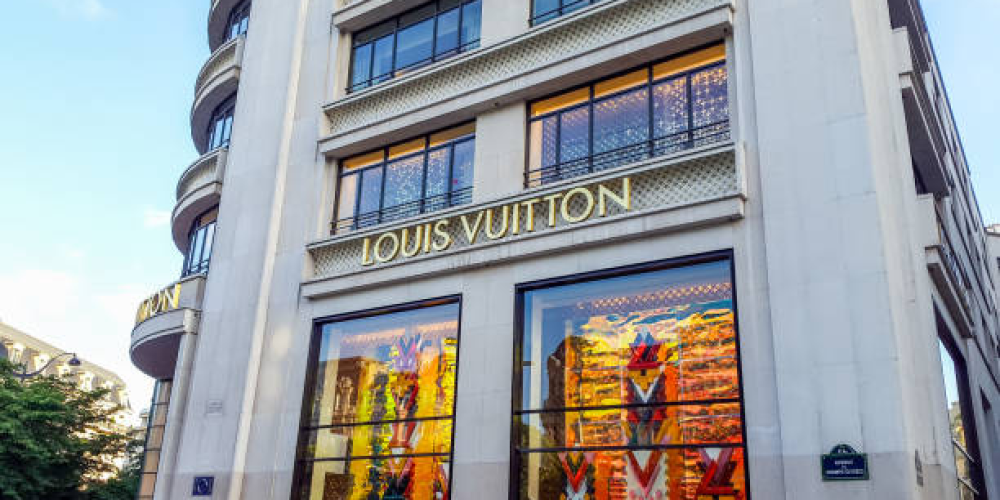Louis Vuitton, one of the world’s most renowned luxury fashion brands, has set the standard for excellence in design, craftsmanship, and exclusivity. Founded in 1854 in Paris, France, Louis Vuitton began as a maker of high-quality luggage, specializing in custom trunks for the elite. Over the years, the brand evolved into leather goods, ready-to-wear, accessories, and footwear, but it has always remained synonymous with luxury and craftsmanship.
The Evolution of Louis Vuitton
 Louis Vuitton’s story began with the vision of its founder, Louis Vuitton Malletier, who sought to create functional yet aesthetically beautiful luggage. His trunks, featuring a flat top and a distinctive monogram canvas, revolutionized how people travelled. The brand’s iconic Monogram canvas, created in 1896 by Vuitton’s son, Georges Vuitton, quickly became a symbol of both practicality and prestige. This monogram remains one of the most recognizable brand patterns in the world today.
Louis Vuitton’s story began with the vision of its founder, Louis Vuitton Malletier, who sought to create functional yet aesthetically beautiful luggage. His trunks, featuring a flat top and a distinctive monogram canvas, revolutionized how people travelled. The brand’s iconic Monogram canvas, created in 1896 by Vuitton’s son, Georges Vuitton, quickly became a symbol of both practicality and prestige. This monogram remains one of the most recognizable brand patterns in the world today.
Louis Vuitton’s transition from a small trunk-making business to a global luxury brand can be attributed to several strategic moves. In 1987, the company merged with Moët Hennessy, forming the Moët Hennessy Louis Vuitton (LVMH) conglomerate. This merger positioned Louis Vuitton to become a part of a luxury empire, allowing it to expand its global footprint and diversify its product offerings.
The Power of Innovation
What sets Louis Vuitton apart from other luxury brands is its ability to balance tradition with innovation. While the brand retains a strong connection to its heritage, it has never shied away from reinvention. Under the creative direction of Marc Jacobs, who served as the artistic director from 1997 to 2013, Louis Vuitton became a leader in high-fashion collaborations. The brand’s collaborations with renowned artists such as Takashi Murakami, Richard Prince, and Stephen Sprouse infused a new, contemporary spirit into its collections, appealing to younger, fashion-forward consumers.
The collaborations were a stroke of genius, turning limited-edition pieces into coveted items and further establishing Louis Vuitton as a brand that understands the intersection of art, culture, and fashion. The 2001 collaboration with Murakami, in particular, is often seen as a milestone in the brand’s evolution, creating bags and accessories featuring colourful versions of the classic monogram. This strategy not only broadened the brand’s appeal but also helped elevate its cultural relevance.
Louis Vuitton’s commitment to innovation continued with the appointment of Virgil Abloh as the Men’s Creative Director in 2018. Abloh, known for his streetwear influence and as the founder of Off-White, brought a fresh, youthful perspective to the brand. His appointment marked a pivotal moment in the fashion industry, bridging the gap between luxury fashion and street culture. Abloh’s designs, such as the iconic “Louis Vuitton x Nike” sneakers, exemplify the fusion of high fashion with contemporary urban trends.
Craftsmanship and Exclusivity
 At the heart of Louis Vuitton’s brand lies a commitment to exceptional craftsmanship. The brand’s products are still made by skilled artisans who undergo rigorous training to uphold the brand’s standards. Each piece, from the famous Louis Vuitton Speedy bag to the custom trunks, is created with the utmost attention to detail and precision. This dedication to quality, paired with the brand’s ability to maintain an air of exclusivity, has made Louis Vuitton a symbol of status.
At the heart of Louis Vuitton’s brand lies a commitment to exceptional craftsmanship. The brand’s products are still made by skilled artisans who undergo rigorous training to uphold the brand’s standards. Each piece, from the famous Louis Vuitton Speedy bag to the custom trunks, is created with the utmost attention to detail and precision. This dedication to quality, paired with the brand’s ability to maintain an air of exclusivity, has made Louis Vuitton a symbol of status.
Louis Vuitton’s strategy of scarcity has also played a significant role in its success. Limited editions, seasonal collections, and exclusive collaborations ensure that the brand’s products are always in high demand. By limiting production and keeping tight control over distribution, Louis Vuitton maintains its allure and ensures that owning a piece is a mark of distinction.
The Digital Transformation
In recent years, Louis Vuitton has embraced digital platforms to expand its reach while maintaining its luxury image. The brand has adopted e-commerce and online marketing as part of its strategy, offering customers the opportunity to buy products from the comfort of their homes. Social media channels like Instagram, YouTube, and Twitter are leveraged to tell compelling brand stories, showcase collections, and engage with younger audiences.
Moreover, Louis Vuitton’s virtual runway shows and presence in gaming and virtual reality have signalled its efforts to connect with a tech-savvy, digital-native consumer. These innovative approaches help the brand remain relevant in a rapidly changing market while preserving its exclusivity and prestige.
Conclusion
Louis Vuitton’s continued success can be attributed to its unwavering commitment to craftsmanship, innovation, and exclusivity. By blending tradition with contemporary relevance, the brand has managed to remain at the forefront of the luxury fashion industry for over a century. As Louis Vuitton continues to push boundaries, it stands as an example of how heritage, creativity, and strategic vision can come together to create a timeless brand.





